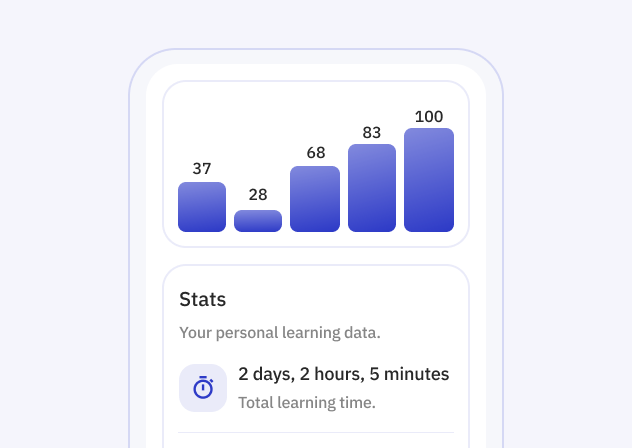Best Language Learning Software
In the dynamic era of digital transformation, learning software has revolutionized the way individuals enhance their language skills. Whether you’re starting from scratch or looking to polish your linguistic prowess, the right tools can dramatically streamline your educational journey. Among a plethora of options, certain programs and applications stand out for their effectiveness, user-friendliness, and innovative approaches. This article explores ten of the best learning software that could be your companion in mastering new languages.

The most efficient way to learn a language
Try Talkpal for freeDiscover the Best Language Learning Software
1. Duolingo: A User-Friendly Approach to Language Mastery
Duolingo is renowned for its engaging and interactive interface that makes language learning fun and accessible. Featuring a wide range of languages, Duolingo uses gamification to encourage consistent study habits. Users progress through levels that cover grammar, vocabulary, and speaking skills, making it ideal for beginners and intermediate learners. The software adapts to your learning pace, providing tailored exercises to help improve your weaknesses.
2. Rosetta Stone: Immersive Language Learning
For over 25 years, Rosetta Stone has been a leader in providing comprehensive language learning software. What sets Rosetta Stone apart is its immersive methodology, which eschews translations in favor of visual and audio cues that facilitate natural language acquisition. This method helps learners think in the new language, improving fluency and comprehension. The software offers lessons in pronunciation, vocab, and live tutoring sessions to reinforce learning objectives.
3. Babbel: Conversational Skills at the Forefront
Babbel excels in preparing learners for real-world conversations. The learning software is structured around practical themes such as travel, family, business, and food, which are vital in everyday communications. Babbel’s lessons start by teaching you phrases and sentences that are immediately applicable, enhancing both your speaking and listening skills. With regular review sessions to reinforce what you’ve learned, Babbel ensures information retention and language proficiency.
4. Memrise: Vocabulary Expansion Made Exciting
Memrise uses spaced repetition technology to help learners expand their vocabulary effectively. The platform includes a mix of native speaker videos and memory-enhancing tools, that not only teach words but also how they are used contextually. Memrise offers courses in a variety of languages and focuses heavily on real-life uses, which makes it especially useful for tourists and casual learners looking to improve their language skills quickly.
5. Pimsleur: Audio-based Language Learning Mastery
Pimsleur’s learning software is almost entirely audio-based, designed for those who learn best through listening. Each lesson encourages spoken practice, making it ideal for improving pronunciation and conversational skills. Pimsleur also incorporates graduated interval recall, a technique that introduces new words at gradually increasing intervals to aid memorization. This method is great for learners who want to practice their language skills on-the-go.
6. Busuu: A Community of Language Learners
Busuu offers the unique advantage of connecting learners with native speakers around the world. This interaction allows learners to practice reading, writing, speaking, and listening with real people instead of relying solely on programmed lessons. Furthermore, Busuu provides personalized study plans and feedback on exercises from native speakers, making it a robust community-centered learning software.
7. Talkpal AI: Innovative AI-based Language Practice
Talkpal AI stands out by incorporating advanced artificial intelligence to simulate conversations and provide real-time feedback. This tool is especially valuable for refining pronunciation and understanding colloquial phrases often used in everyday communication. Talkpal AI is continually updated with the latest AI technology, ensuring that it offers cutting-edge tools for language learners seeking practical fluency.
8. FluentU: Learning with Real-World Media
FluentU takes a novel approach by using real-world videos like music videos, movie trailers, news, and inspiring talks to teach languages. This method helps learners to understand how the language is used in various contexts, from casual conversations to more formal discourse. The software also offers annotations, vocab lists, and quizzes to complement the video materials, making it a multimedia learning experience.
9. Mango Languages: Personalized Learning Paths
Mango Languages provides language learning solutions with a focus on practical speaking skills and culture. Each lesson incorporates cultural insights, which are crucial for learners looking to understand the linguistic nuances better. With personalized review activities and critical thinking exercises, Mango ensures that learners do not just memorize the language but understand its context.
10. italki: Customizable One-on-One Tutoring
italki connects learners with language tutors around the globe, offering personalized one-on-one sessions tailored to individual learning goals and preferences. This platform is ideal for learners who need direct interaction and focused instruction. Italki also offers flexibility in scheduling and a vast selection of tutors for nearly any language, which makes it a highly adaptable and user-focused learning software.
Each of these learning platforms provides unique tools and methodologies to language learning, ensuring there’s something out there for every type of learner. Whether through interactive games, practical conversations, or immersive videos, these learning software options offer engaging, effective, and personal ways to learn a new language.
The most efficient way to learn a language
Try Talkpal for freeFrequently Asked Questions
What is Learning Software?
How Can Learning Software Improve Language Skills?
Is Learning Software Effective for All Age Groups?
What Criteria Should I Consider When Choosing Learning Software?
The talkpal difference

Immersive conversations
Each individual learns in a unique way. With Talkpal technology, we have the ability to examine how millions of people learn simultaneously and design the most efficient educational platforms, which can be customized for each student.

Real-time feedback
Receive immediate, personalized feedback and suggestions to accelerate your language mastery.

Personalization
Learn via methods tailored to your unique style and pace, ensuring a personalized and effective journey to fluency.







